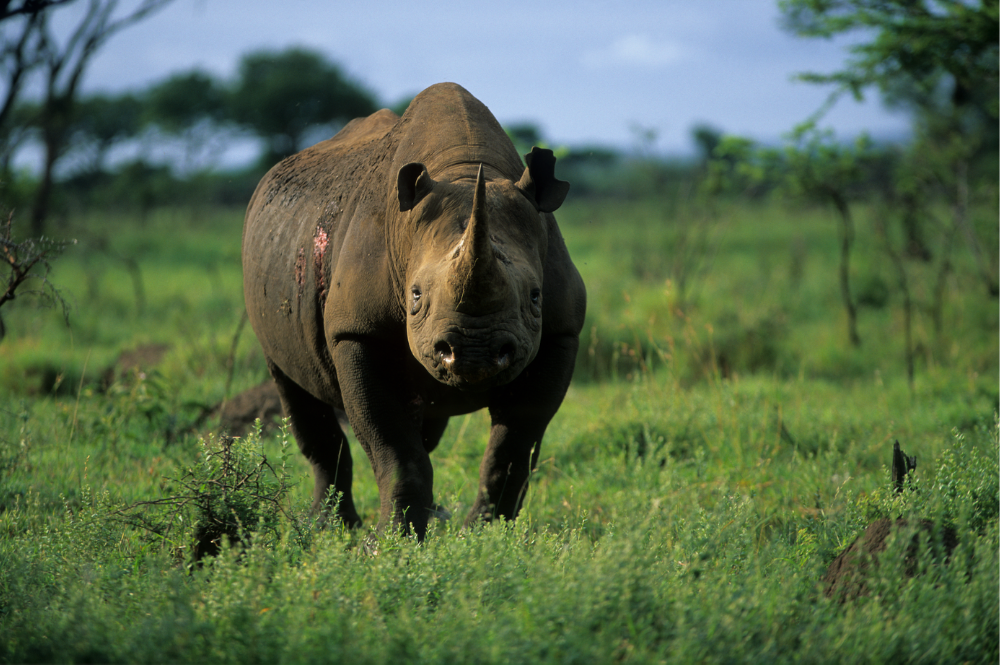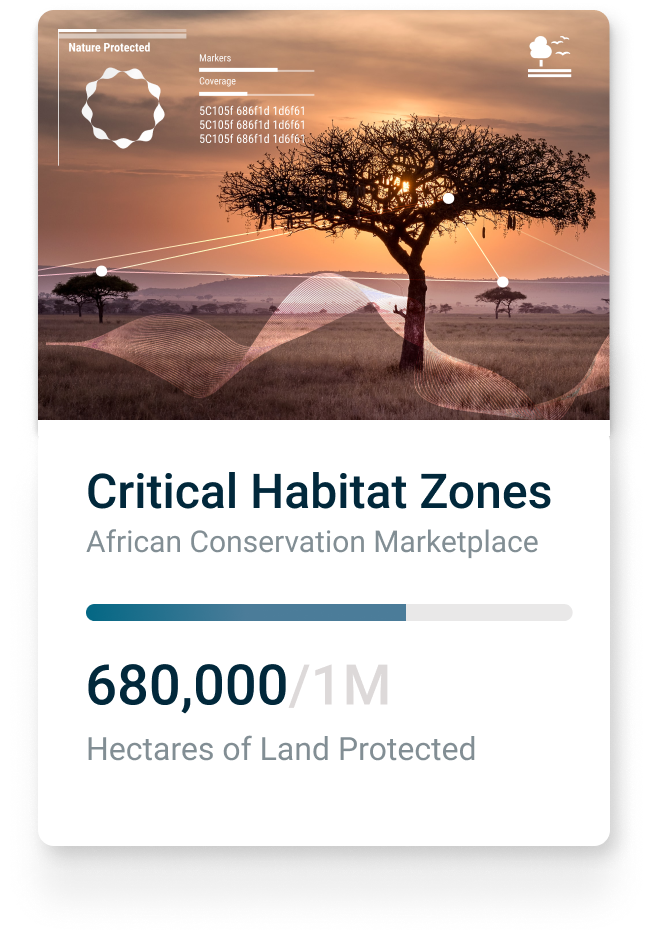Article by David Wood
We are launching an Impact Marketplace on the ixo Internet of Impact, for financing and verifying the protection and restoration of natural biodiversity in Africa.
Over the last century Africa has lost over 97% of its African elephant population, 97.6% of the black rhino population within the past 60 years, and more than 50% of lions in the last two decades. Losses of these keystone species are only the tip of the iceberg of ecological devastation. The list inevitably goes on and on.
How are we going to preserve the biodiversity and habitats of the remarkable and unique variety of life that are irreplaceable assets of our Earth.
A ‘critical habitat’ is defined as a habitat that supports the recovery of species that appear on the griwing list of endangered species. It’s defined as a specific area within or outside the geographical area occupied by the species at the time of listing that contain physical or biological features essential to the conservation of the species and may require special management considerations or protection.
Digitisation of finance can easily be harnessed for a citizen-centric, sustainable future. It's an opportunity that should be used; not doing so risks finance diverging from the needs of citizens for inclusive, sustainable development. In August 2020, the UN Secretary-General initiated the Task Force on Digital Financing of the Sustainable Development Goals (SDGs). ‘People’s Money: Harnessing Digitalisation to Finance a Sustainable Future’, the Task Force’s final report, summarises the findings and recommendations developed and agreed on by the Task Force. It is based upon considerable engagement with stakeholders and research.
In South Africa alone, biodiversity is greatly endangered; Of the 440 vegetation types in the richly biodiverse country, 5% are currently threatened. These losses and degradation of the country’s biodiversity have serious implications for society and the economy. Natural ecosystems provide essential services, including the provision of clean water and air, prevention of soil erosion, pollination of crops, nutrient cycling, pollination of crops and provision of food and shelter.

Key critical biodiversity habitats have been identified, and systems are being put in place to preserve these areas and indeed grow them. One of these systems is ‘The Wildlife Zones’ initiative, connected to protecting the rhino population in South Africa. This initiative will roll out in three phases, focusing on four areas of intervention. This will entail the largest translocation and rewilding of rhino ever undertaken.
- The first area is promoting national coordination by establishing the Environmental Enforcement Fusion Centre (EEFC). This initiative will be driven directly by industry-leading wildlife crime experts.
- Secondly, it will be encouraged to share knowledge gained through lessons learnt to promote best practices and optimal resouce allocation. As the project grows, new information will be shared between various initiatives within the zones.
- The third intervention will focus on the joint protection of the national rhino herd by implementing strategies, closing gaps and establishing core, fit-for-purpose rhino protection capabilities and solutions within each zone.
- The fourth intervention further strengthens the national intelligence picture on wildlife crime in South Africa by gathering the best wildlife crime analysts from government conservation and environmental departments and agencies. It’s with their knowledge and experience as well as understanding of this very complex situation that will guide operations and investigations that will ultimately disrupt rhino horn trafficking supply chains.
Essential to achieving digitisation of finance for this purpose is implementing creative, innovative financing mechanisms to connect capital to projects producing positive biodiversity outcomes on the ground. Several mechanisms can be used to achieve this (included here a but a few):
- Biodiversity offsets: This is a measurable conservation outcome resulting from the compensation for significant residual biodiversity loss arising from project development after appropriate prevention and mitigation measures have been taken. Offsets can deliver biodiversity benefits (e.g., reforestation) through a transaction, where offset sellers (e.g., a conservation NGO) sell offsets to developers (e.g., a mining company) who seek to compensate the residual biodiversity loss resulting from a development activity (e.g., mining).
- Carbon markets: These aim to reduce greenhouse gases (GHG) emissions cost-effectively by setting limits on emissions and enabling trading of emission units. Therefore, trading allows entities that can reduce emissions at low cost to be paid to do so by high-cost emitters, thus lowering the economic cost of reducing emissions.
- Eco-tourism: Travelling responsibly to natural areas can yield alternative sources of income for the conservation of protected areas and the welfare of local communities. Receivables from tourists include accommodation and catering as well as any expenditure in the country where they travel. The government instead benefits from the direct or indirect taxation on the same.
- Impact Investing: Impact investors invest in an innovative but commercially viable business in sustainable agriculture, affordable housing, affordable and accessible health care, clean technology and financial services for the poor. Along with health and inclusive finance, the protection of the environment is a core area of impact investment.
Producing trusted data from the ground in these remote regions in Africa is essential, and it’s something Wadappt has been doing for many years. We pioneered an end-to-end environmental data platform GDM+ that specialises in ecological data capture, database management, reporting and analysis. This plaform is currently widely deployed by NGOs, nature reserves, and research organisations, to collect and report field data for security, ecological monitoring, impact verification and management. Our platform combines data capture, storage, display, analysis, and reporting capabilities, to provide an end-to-end solution for planning and evaluating conservation programs and services.
Our next evolution of this system will use the ixo Protocol and Internet of Impact blockchain to combine these data capture capabilities with impact claims and verification, outcomes-based financing (using ixo Alphabonds), and the production of various types of Nature Impact Tokens that can be traded globally for finacing nature-based solutions.
These mechanisms will ensure the prosperity and dynamic allocation of capital to critical biodiversity habitat zones across Africa, serving both people and the planet.
At this point in the history of Earth, serving these habitats and people who are critically in need of change and help will be the cornerstone of a fundamental transformation in how biodiversity is valued as collateral for the new global economy and the future of money.




